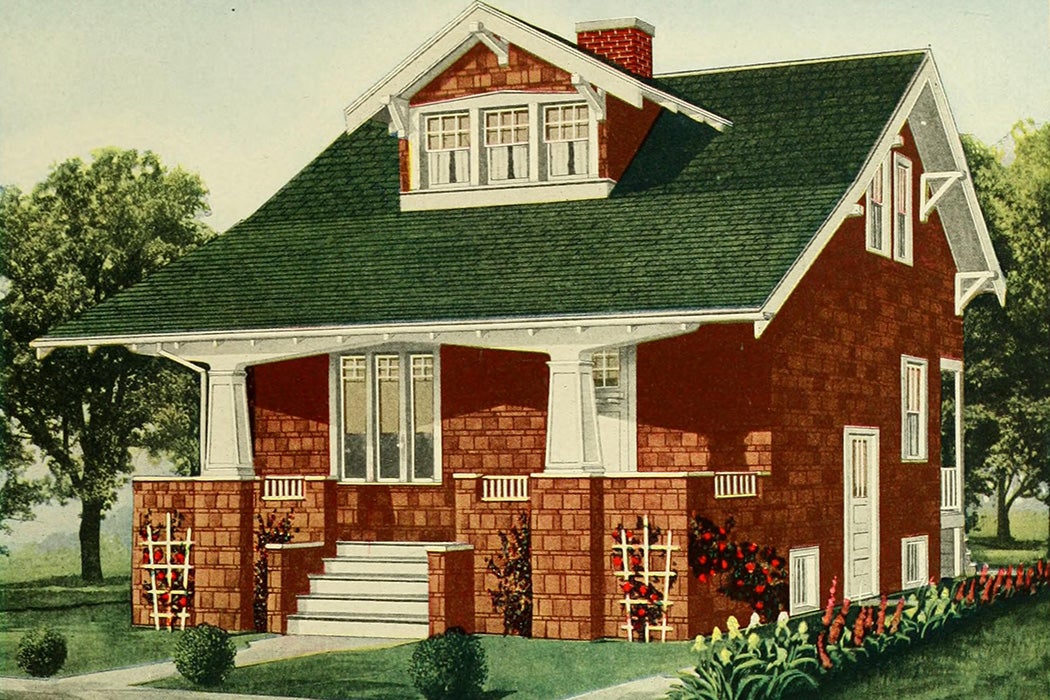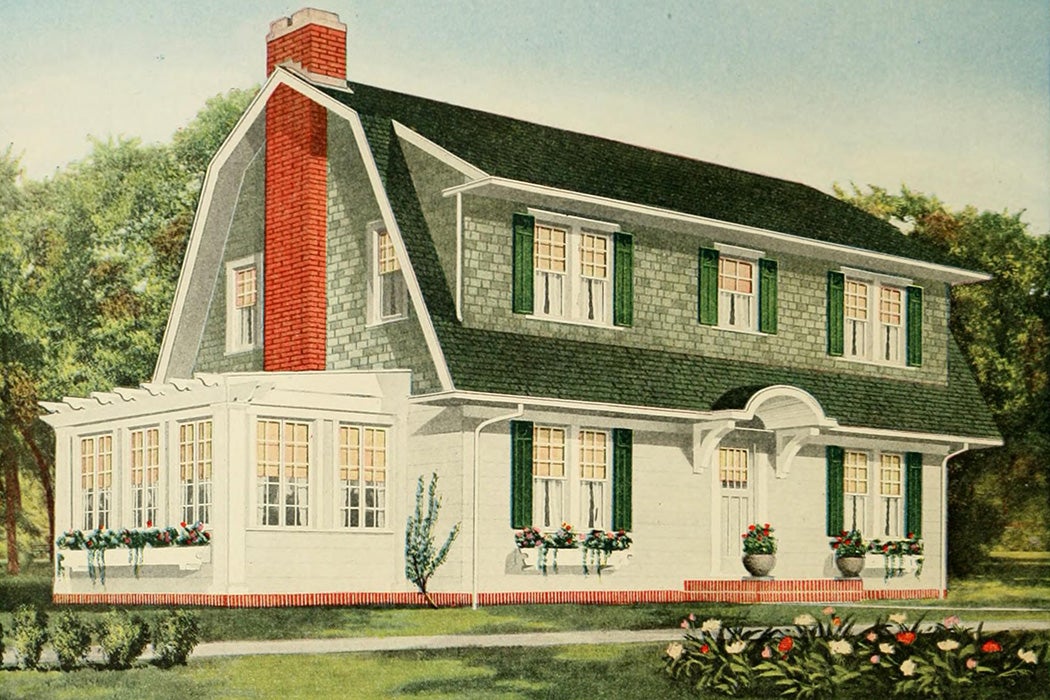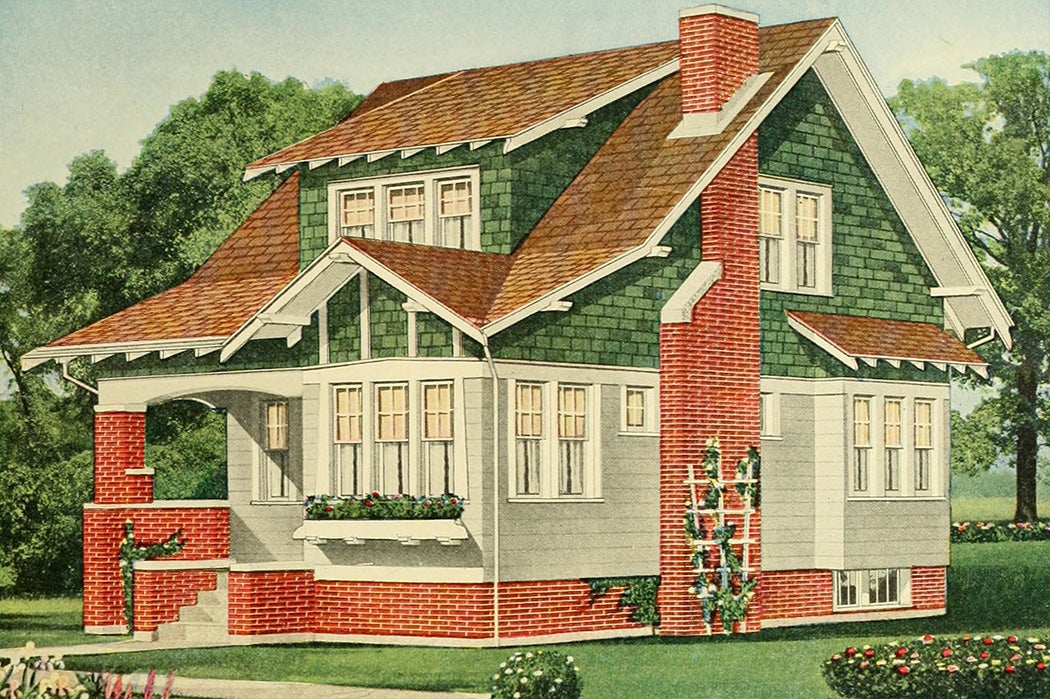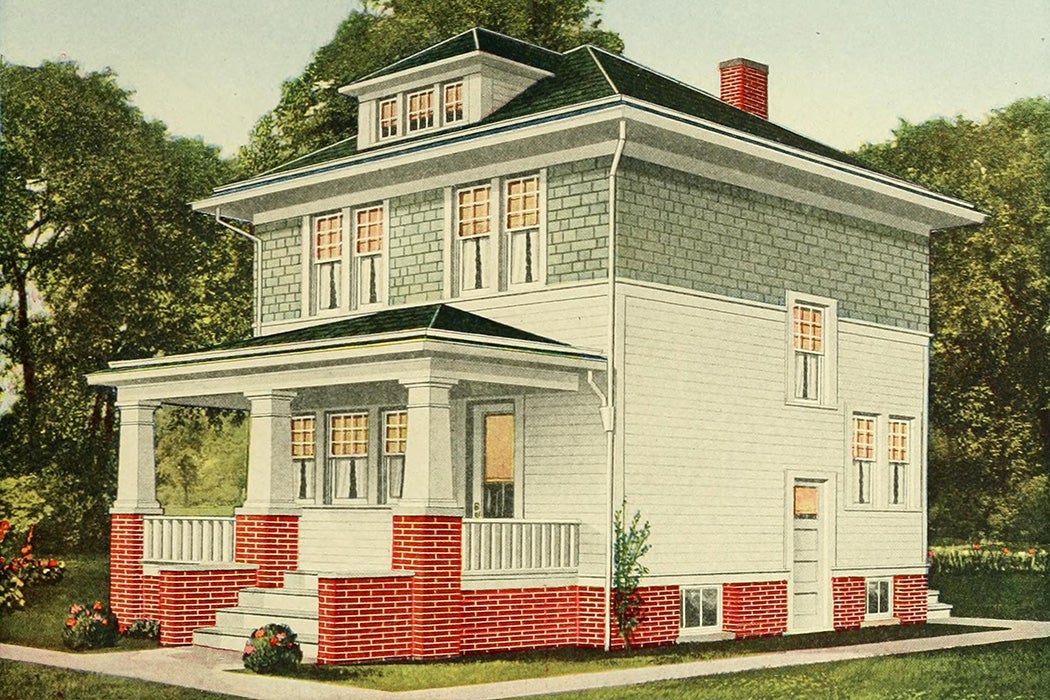In the early 1920s, the United States government confronted a housing crisis. During the First World War, the government had rerouted domestic spending on housing units to military spending. At the same time, a growing urban population, comprised increasingly of rural transplants and international immigrants, put a squeeze on the existing housing system. The Great Migration of the 1910s, in which thousands of Black Americans left the South for the North, had also increased the northern population and heightened racial tensions around housing. By 1923, a Los Angeles Times article, quoting Secretary of Commerce Herbert Hoover, reported the housing shortage at one million units.
The government, under the guidance of President Warren G. Harding, knew that the country needed a quick fix to its housing woes. But in the aftermath of the 1917 Bolshevik Revolution, a deep distrust of communism meant that cooperative and state-run housing projects were off the table. Officials looked to the private sector for a solution, and found a willing and able partner in a new social enterprise: Better Homes in America.
Weekly Newsletter
Better Homes in America (BHA) was formed in 1922, a partnership between the Harding administration (Herbert Hoover in particular) and Marie Meloney, the editor-in-chief of the women’s magazine The Delineator. The campaign encouraged home ownership as a financial, social, and patriotic undertaking, with homemaking and consumerism at its core. BHA presented itself as a traditionalizing force for good, one that would help stabilize the country and raise up the next generation of patriotic citizens.
The housewife in particular was called upon for service. In her magazine, Meloney extolled the virtues of homemaking as an act of civic duty, and, in the extreme, a bulwark against communism. “There is not another activity or industry comparable, in numbers employed, in value of effort or importance of production, with this one of the home. But America has left it to shift for itself, to get on any old way,” she wrote in October 1922. “The housewife and her problems have been forgotten. It is time that she be remembered. For what matter it if a nation be great in industry, in commerce, in politics, if she be not also great in her homes?”
To spread their message, BHA leaders established local chapters, and provided the chapters with information to disseminate to members and the public. In October 1922, they launched Better Homes Week, which included a campaign for local chapters to build their own “better” model homes in a BHA-approved style; national contests for the best model home; and the erection of a National Better Home in Washington, D.C. The National Better Home was designed in the style of a seventeenth-century home on Long Island, with a nostalgic eye turned toward a bygone era of wholesome family togetherness, but in a way that was achievable for a largely white middle-class. According to the urban historian Dolores Hayden, by 1930, the national BHA claimed that there were more than 7,000 local committees in operation.
The program was explicit in its aims to encourage home ownership and home maintenance for all Americans, but it also had a mission to establish and promote “the right kind” of American home. The historian Janet Hutchison writes in Perspectives on Vernacular Architecture that BHA aimed to “cure home neglect through an educational program that combined the nineteenth-century republican values of thrift and self-reliance with twentieth-century household technology.”

The ideology behind BHA ultimately privileged a white, middle-class version of home ownership. In 1922, The Delineator began to devote multiple pages to BHA and its mission, including suggestions for home furnishing and contributions from the organizers. In the October 1922 issue, Herbert Hoover wrote an article called “The Home as an Investment,” declaring that urban overcrowding and poverty “means a large increase in rents, a throw-back in human efficiency, and that unrest which inevitably results from inhibition of the primal instinct in us all for home ownership.”
In Agricultural History, Hutchison writes:
The homes put forth by the national leaders varied somewhat in design but included new household technology that stressed convenience and room layouts that emphasized both family interaction and privacy… In front of the ideal house lay a green, well-tended yard, while behind it might be a small garden. In short, the prescription endorsed by the Better Homes leaders at the national level was that of a suburban dwelling replete with new technological amenities and private space.
Meloney ran “The Ideal Small House,” a column by the architect Donn Barber, which stressed modernity, thrift, and American design for the entire home. There was also a “Rooms for Boys and Girls” column by Mrs. Charles Brady Sanders, dictating “dainty, bright and frivolous” furnishings for girls’ rooms. In boys’ rooms, “masculinity must be foremost.” These columns reinforced the ideals of BHA and made it clear that, despite any structural or financial barriers, readers could and should pursue them.
However, while this ideal was encouraged in literature disseminated to Americans across class and race lines, the realities of achieving this goal were not addressed. Segregationist housing policies, discrimination by banks, and poverty among racialized Americans prevented many people from buying and maintaining homes the BHA way. But BHA rhetoric made it clear that, instead of addressing housing inequality or the shortage of affordable units, political leaders were presenting home ownership as an attainable choice for all Americans, implying that an inability to live the BHA way was a matter of personal, rather than institutional, failing.

On display at the national exhibition in D.C., the National Better Home included modern amenities like indoor plumbing and electricity, reflecting an attempt to encourage homeowners to purchase new appliances and embrace scientific thinking at home. Hutchison writes that the living spaces in the house were designed to “evoke sentimental images of family unity” while “the kitchen conveyed efficiency and cleanliness.” That approach to home design was emulated in cities and towns around the country, as local communities vied for the title of Best American Home. These exhibitions were written up in newspapers across the country, and the movement’s leaders emphasized thrift and sensibility over “commercialism.”
For Black and immigrant homeowners (or would-be homeowners), BHA offered a kind of aspirational modeling that decried their current living conditions, but offered no substantial way out of their circumstances. In the “Guidebook for Better Homes Campaigns: Better Homes Week, April 25 to May 1, 1926,” BHA leaders pitched local community representatives on starting their own Better Homes Week as a way to help racialized people, while assuming that guidebook readers were themselves white:
There may be in your community a large population of immigrants or of negroes, who because of limited education have not yet learned the ways of securing the best living conditions which are within their reach. Your demonstration may be made of particular value to such groups in the population through the work of special subcommittees. The best types of new and remodeled houses accessible to families in these groups may be shown, and helpful educational programs and demonstrations conducted, to show them how better homes may be secured and maintained.
The demonstrations encouraged Black Americans and immigrants to embrace white, middle-class aesthetics, home management systems, and scientific doctrines of cleanliness and hygiene—a kind of assimilation through architecture. The 1926 Guidebook celebrated the inclusion of these groups in demonstrations the year before in Atlanta:
A notable fact about the Atlanta demonstration was that special care was taken to arrange for educational work among the native white population, among the large negro population, and among the immigrants, whose knowledge of American standards of housing and home life is slight, and who may experience difficulty in adjusting themselves to American conditions.
The guidebook reported a successful “Americanization” demonstration for foreign-born women at a previously “gloomy and rather unattractive” apartment that rented for $35 per month and was transformed “in accordance with the best American standards for $794.66,” likely far more money than the immigrant women could afford to invest on their own. A local American Citizenship chairwoman wrote a testimonial:
The Better Home in our section made us know, understand, and like each other better. It aroused a desire for cleaner and more attractive homes. It taught many that they could make over the old homes into far more attractive places in which to reside and rear their children.
The guidebook also celebrated the Atlanta demonstrations for including Black people. The caption for the photograph of the “negro home” enforced the distinctions between the housing possibilities for different groups: “This house, which contains four rooms, was furnished and demonstrated by a subcommittee of negroes, as a Better Home for people of their race. The cost of construction was $2,150.” Local BHA competitions also were largely segregated, at first unofficially, and then officially beginning in 1924. In Agricultural History, Hutchison explains that certain homes on St. Helena, a Gullah Island in Georgia, were granted “special” BHA prizes in 1922 and 1923 alongside white contest winners, before the competition was segregated by race in 1924, “due to local community pressure throughout the South.”
BHA also published the Better Homes Manual in 1931, in which readers learned about all of the physical and social requirements of a modern home. It was an extensive catalog of building and maintenance considerations, but also directed would-be owners to consider the neighborhoods they might buy in:
While a family may think that it would like to live close to relatives and friends, this factor should not be given too much weight. Nevertheless, the general type of people living in the neighborhood is important, especially if there are children in the family, who should be brought up in the right kind of surroundings.
These coded “considerations,” writes Richard Rothstein in The Color of Law: A Forgotten History of How Our Government Segregated America, reinforced segregationist attitudes and housing policies, encouraging white flight as a positive social and financial choice.

By 1935, six years into the Great Depression, the Better Homes in America organization had lost a lot of money, and despite the participation of 10,000 communities in that year’s Better Homes week, the corporation was liquidated. All research and publications were transferred to Purdue University’s Housing Research Foundation, and the reformers and politicians who made up the organization’s leadership turned their attentions elsewhere.
But BHA’s central tenets of traditionalism were folded into the nascent New Deal housing policies of the 1930s, notably in the enactment of the 1934 National Housing Act, and the creation of the Federal Housing Administration (FHA) as a government-run mortgage insurer. According to the economist James L. Greer in Statebuilding from the Margins: Between Reconstruction and the New Deal, “BHA’s model of a single-family home equipped with a full array of structural amenities played a role in the wide-scale disinvestment in existing homes across the country.” Further, Greer argues that these standards, once adopted by the FHA, “became… the basis of home mortgage redlining that adversely affected a huge share of already standing housing, especially in older cities.”
John Kimble, the New Orleans Public Policy Director for the Louisiana Association of Nonprofit Organizations, writes in the journal Law & Social Inquiry that:
…as the government body responsible for both insuring the market’s operation and ensuring its growth, the FHA sought to eliminate all elements of risk that could potentially destabilize real estate development. By equating African Americans with risk, the FHA produced a lending drought in neighborhoods of mixed racial composition and directed the rain of capital to fall exclusively over homogenous, white suburbs.
This would make it almost impossible for Black families to put into practice the moral and consumer guidelines put forth by the BHA.
Further, as the economist Gerald Sazama writes in the American Journal of Economics and Sociology, the 1937 United States Housing Act, designed to improve public housing conditions, did not include provisions for cooperative housing or other alternative housing models. Instead, it focused on public housing as a temporary measure, continuing to encourage single-family home ownership despite the realities of poor Americans’ lives.

These FHA policies have continued to affect housing availability and affordability in the United States for decades. Rothstein points to FHA involvement in building all-white suburban developments in the postwar era as the department’s “biggest impact on segregation.” Urban public housing has been underfunded, and FHA’s policies have prevented Black Americans from building housing equity in many suburban areas. That in turn has reinforced racial wealth gaps and inequality. Despite the passage of the 1968 Fair Housing Act, prohibiting housing discrimination based on race, Rothstein writes that the disparities remain:
The enormous black-white wealth gap, for example, responsible for so much of today’s racial inequality, is in large part a product of black exclusion from homes whose appreciation generated substantial equity for white working-class families with F.H.A. and V.A. mortgages that propelled them into the middle class.
As large and mid-sized cities face heightened housing affordability crises, and more people are feeling rent-burdened across the income distribution, perhaps we don’t need another BHA for the modern housing landscape. Some governments and individuals already have begun to reimagine what “home” looks like in the twenty-first century. Some cities, for instance, are starting to undo their single-family zoning rules that prohibit small and large scale density, supported by groups like YIMBY (Yes in My Backyard) that are fighting urban sprawl and supporting affordable housing initiatives.
While the BHA program might have encouraged some Americans to reach for the dream of home ownership, many more were shut out from the process altogether. By understanding the role of governments in shaping housing availability and affordability for citizens, we can work to change our conception of housing inclusivity for a new generation.







